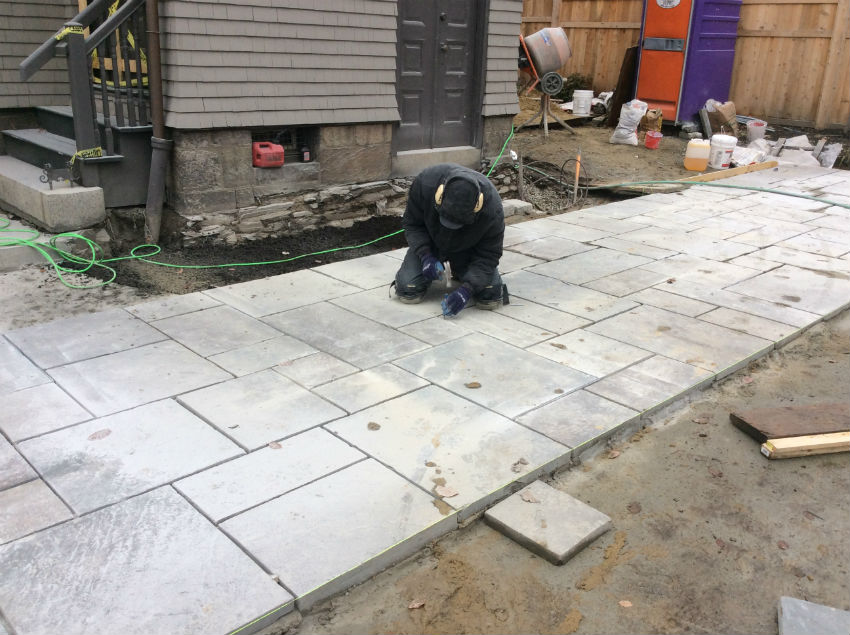Anybody north of a certain latitude knows to dread the chore of shoveling snow, so the idea of a radiant heated driveway has universal appeal. This bluestone paving makes a beautiful surface, but it is just the business end of a complex snowmelt system that melts the snow as it falls – – or the ice as it forms. This is a great concept, but frankly, expensive to run, as the driveway is a significant mass of masonry, located outdoors, in freezing conditions. Well, you get the idea.

Below the two-inch pieces of bluestone are a concrete slab and a compacted sub-base. Below that is the radiant heat system itself, and below that, some serious insulation board (because you don’t want to have to pay to heat the whole planet), and below that, more base material, for stability. Bottom line, you are heating about 125 pounds of masonry (to 38 degrees) for every square foot of area, in freezing conditions. This will require a dedicated boiler, and energy requirement likely equal to or in excess of what it takes to heat your whole house.
The key to the system is an embedded temperature and moisture sensor that tells the boiler when to heat the masonry mass below the driveway surface. There are enough variables and feedback so that the conversation between the boiler and the sensor is managed through a software program, to minimize energy costs. In the Boston area, snow can be seriously disruptive, so some of our clients choose to have the security of a reliable radiant heat snow melt system – – and the luxury of not having to pick up a snow shovel all winter.